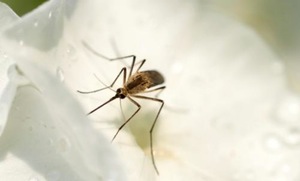
Diagnosing malaria could soon be as simple as taking a breath test.
Australian scientists have made the groundbreaking discovery that malaria-infected patients have higher levels of certain chemicals in their breath.
The chemicals are undetectable to the human nose, but can be used to detect the disease much earlier than the traditional method of using a microscope to find parasites in blood.
The level of the chemicals increases with the severity of the mosquito-borne infection and disappears after cure.
“What is exciting is that the increase in these chemicals were present at very early stages of infection, when many other methods would have been unable to detect the parasite in the body of people infected with malaria,” said Dr Stephen Trowell, research group leader at the CSIRO.
He is confident the breakthrough can be used to develop a cheap, quick and effective method of testing for the disease.
“We are also working with colleagues to develop very specific, sensitive and cheap biosensors that could be used in the clinic and the field to test breath for malaria,” he said.
In 2013 there were almost 200m cases and more than half a million deaths owing to malaria, the World Health Organisation reports.
